The Preparation of Photocatalytic Porous Magnesium Oxychloride Cement-Based Materials and Its De-NOx Performance
Abstract
1. Introduction
2. Result and Discussion
2.1. Physicochemical Properties
2.2. Photocatalytic Performance
2.2.1. Photocatalytic Performance of PPMOC and TiO2
2.2.2. Effect of Porosity and Loading Concentration on Photocatalytic Efficiency
2.2.3. Effect of Porosity on Nitrate Selectivity
3. Experimental Section
3.1. Preparation of PMOC and PPMOC
3.2. Characterization
3.2.1. SEM
3.2.2. Stereomicroscope
3.2.3. Photocatalytic Performance Test
4. Conclusions
Author Contributions
Funding
Data Availability Statement
Conflicts of Interest
References
- Xu, J.; Yang, H.; Yang, Z.; Huang, M.; Zhang, Y.; Yang, C. The effect of TiO2@CoAl-LDH nanosphere on early hydration of cement and its photocatalytic depollution performance under UV-visible light. Constr Build. Mater. 2022, 319, 126227. [Google Scholar] [CrossRef]
- Huang, M.; Yang, Z.; Lu, L.; Xu, J.; Wang, W.; Yang, C. The preparation of g-C3N4/CoAl-LDH nanocomposites and their depollution performance in cement mortars under UV-visible light. Catalysts 2022, 12, 443. [Google Scholar] [CrossRef]
- Cao, J.; Hasegawa, T.; Asakura, Y.; Sun, P.; Yang, S.; Li, B.; Cao, W.; Yin, S. Synthesis and color tuning of titanium oxide inorganic pigment by phase control and mixed-anion co-doping. Adv. Powder Technol. 2022, 33, 103576. [Google Scholar] [CrossRef]
- Yin, S.; Hasegawa, T. Morphology Control of Transition Metal Oxides by Liquid-Phase Process and Their Material Development. KONA Powder Part. J. 2022, 2023015. [Google Scholar] [CrossRef]
- Sorel, S. On a new magnesium cement. Comptes Rendus Acad. Sci. 1867, 65, 102–104. [Google Scholar]
- Montle, J.F.; Mayhan, K.G. Role of Magnesium Oxychloride Cements in Fire Loss Prevention. In Loss Prevention: A CEP Technical Manual; American Institute of Chemical Engineers: Washington, DC, USA, 1974; Volume 8, pp. 52–56. [Google Scholar]
- Montle, J.F.; Mayhan, K.G. Magnesium oxychloride as a fire retardant material. J. Fire Flammabl. Fire Retard. Chem. 1974, 1, 243–254. [Google Scholar]
- Li, Z.; Chau, C.K. Influence of molar ratios on properties of magnesium oxychloride cement. Cem. Concr. Res. 2007, 37, 866–870. [Google Scholar] [CrossRef]
- Bilinski, H.; Matković, B.; Mažuranić, C.; Žunić, T.B. The Formation of Magnesium Oxychloride Phases in the Systems MgO-MgCl2-H2O and NaOH-MgCl2-H2O. J. Am. Ceram. Soc. 1984, 67, 266–269. [Google Scholar] [CrossRef]
- Lu, H.P.; Wang, P.L.; Jiang, N.X. Design of additives for water-resistant magnesium oxychloride cement using pattern recognition. Mater. Lett. 1994, 20, 217–223. [Google Scholar]
- Zhang, C. The research on the water-resistance of MOC II. The loss of the strength of magnesium oxychloride cement stone in water. J. Hunan Univ. Nat. Sci. 1994, 21, 121. [Google Scholar]
- Chau, C.K.; Li, Z. Microstructures of magnesium oxychloride. Mater. Struct. 2008, 41, 853–862. [Google Scholar] [CrossRef]
- Li, Z.; Chau, C.K. Reactivity and function of magnesium oxide in sorel cement. J. Mater. Civ. Eng. 2008, 20, 239–244. [Google Scholar] [CrossRef]
- Xu, X.A.; Shu, C.; Yang, L.; Li, X.; Wang, F.Z. Basic Magnesium Chloride Whisker Photocatalytic Materials: Synthesis and Toluene Degradation Efficiency. Constr. Build. Mater. 2022, 343, 128115. [Google Scholar] [CrossRef]
- Wang, F.; Yang, L.; Sun, G.; Guan, L.; Hu, S. The hierarchical porous structure of substrate enhanced photocatalytic activity of TiO2/cementitious materials. Constr. Build. Mater. 2014, 64, 488–495. [Google Scholar] [CrossRef]
- Yang, L.; Wang, F.; Shu, C.; Liu, P.; Zhang, W.; Hu, S. An in-situ synthesis of Ag/AgCl/TiO2/hierarchical porous magnesian material and its photocatalytic performance. Sci. Rep. 2016, 6, 21617. [Google Scholar] [CrossRef]
- Feng, C.; Wang, F.; Liu, P.; Sun, G.; Yang, L.; Zhang, W.; Shu, C. Photocatalytie Activity of Porous Magnesium Oxychloride Cement Combined with AC/TiO2 Composites. J. Wuhan Univ. Technol. Sci. Ed. 2017, 32, 591–597. [Google Scholar] [CrossRef]
- Folli, A.; Pochard, I.; Nonat, A.; Jakobsen, U.H.; Shepherd, A.M.; Macphee, D.E. Engineering Photocatalytic Cements: Understanding TiO2 Surface Chemistry to Control and Modulate Photocatalytic Performances. J. Am. Ceram. Soc. 2010, 93, 3360–3369. [Google Scholar] [CrossRef]
- Folli, A.; Pade, C.; Hansen, T.B.; De Marco, T.; Macphee, D.E. TiO2 photocatalysis in cementitious systems: Insights into self-cleaning and depollution chemistry. Cem. Concr. Res. 2012, 42, 539–548. [Google Scholar] [CrossRef]
- Hakki, A.; Yang, L.; Wang, F.; Elhoweris, A.; Alhorr, Y.; Macphee, D.E. Photocatalytic Functionalized Aggregate: Enhanced Concrete Performance in Environmental Remediation. Buildings 2019, 9, 28. [Google Scholar] [CrossRef]
- Yang, L.; Hakki, A.; Wang, F.; Macphee, D.E. Different Roles of Water in Photocatalytic DeNOx Mechanisms on TiO2: Basis for Engineering Nitrate Selectivity? ACS Appl. Mater. Interfaces 2017, 9, 17034–17041. [Google Scholar] [CrossRef] [PubMed]
- Ballari, M.M.; Yu, Q.L.; Brouwers, H.J.H. Experimental study of the NO and NO2 degradation by photocatalytically active concrete. Catal. Today 2011, 161, 175–180. [Google Scholar] [CrossRef]
- Wang, F.; Yang, L.; Guan, L.; Hu, S. Microstructure and Properties of Cement Foams Prepared by Magnesium Oxychloride Cement. J. Wuhan Univ. Technol. Sci. Ed. 2015, 30, 331–337. [Google Scholar] [CrossRef]
- Wang, F.; Sun, G.; Zhang, W.; Yang, L.; Liu, P. Performance of photocatalytic cementitious material: Influence of substrate surface microstructure. Constr. Build. Mater. 2016, 110, 175–181. [Google Scholar] [CrossRef]
- Wang, F.; Yang, L.; Wang, H.; Yu, H. Facile preparation of photocatalytic exposed aggregate concrete with highly efficient and stable catalytic performance. J. Chem. Eng. 2015, 264, 577–586. [Google Scholar] [CrossRef]
- Yang, L.; Hakki, A.; Wang, F.; Macphee, D.E. Photocatalyst efficiencies in concrete technology: The effect of photocatalyst placement. Appl. Catal. B: Environ. 2018, 222, 200–208. [Google Scholar] [CrossRef]
- Yang, L.; Hakki, A.; Zheng, L.; Jones, M.R.; Wang, F.; Macphee, D.E. Photocatalytic concrete for NOx abatement: Supported TiO2 efficiencies and impacts. Cem. Concr. Res. 2019, 116, 57–64. [Google Scholar] [CrossRef]
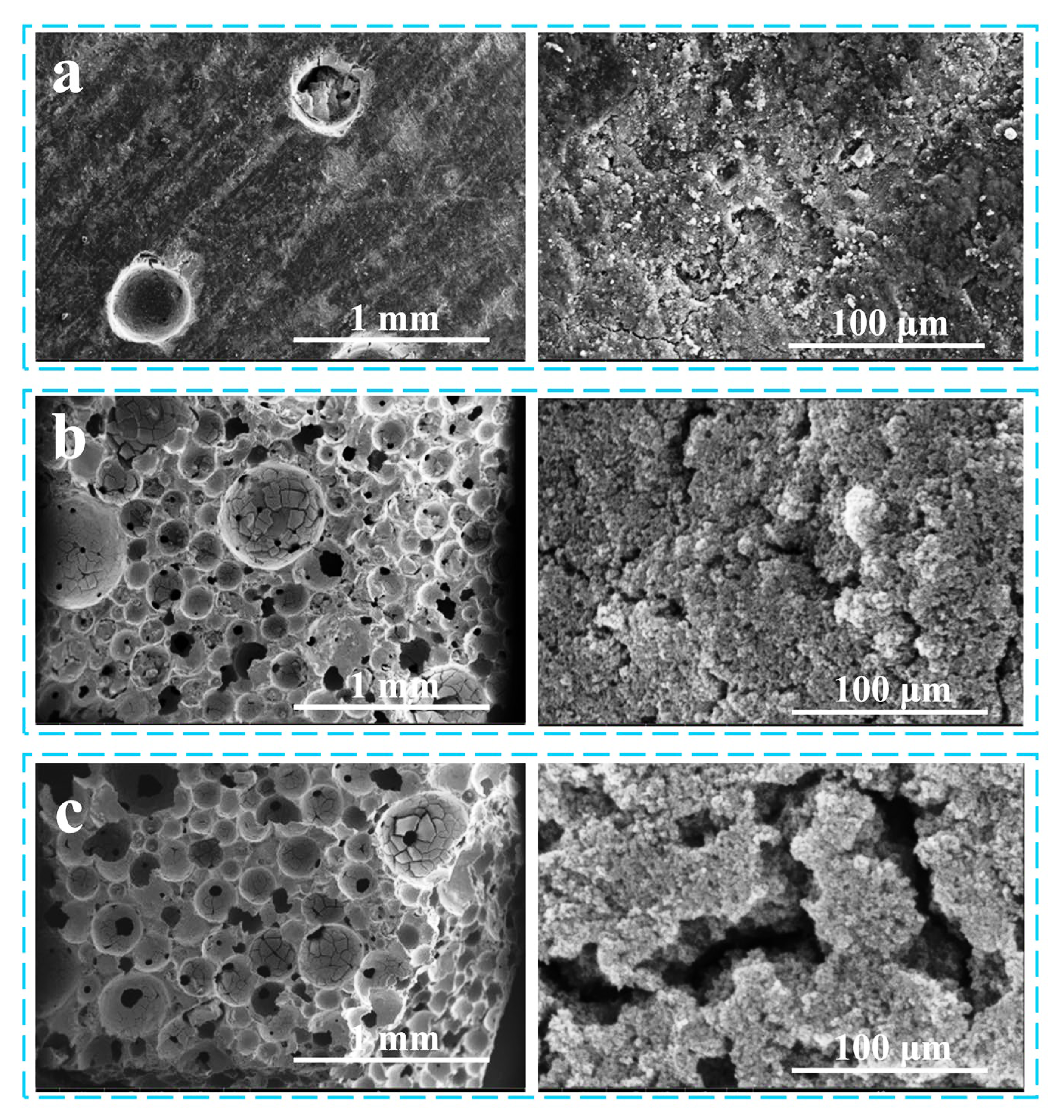

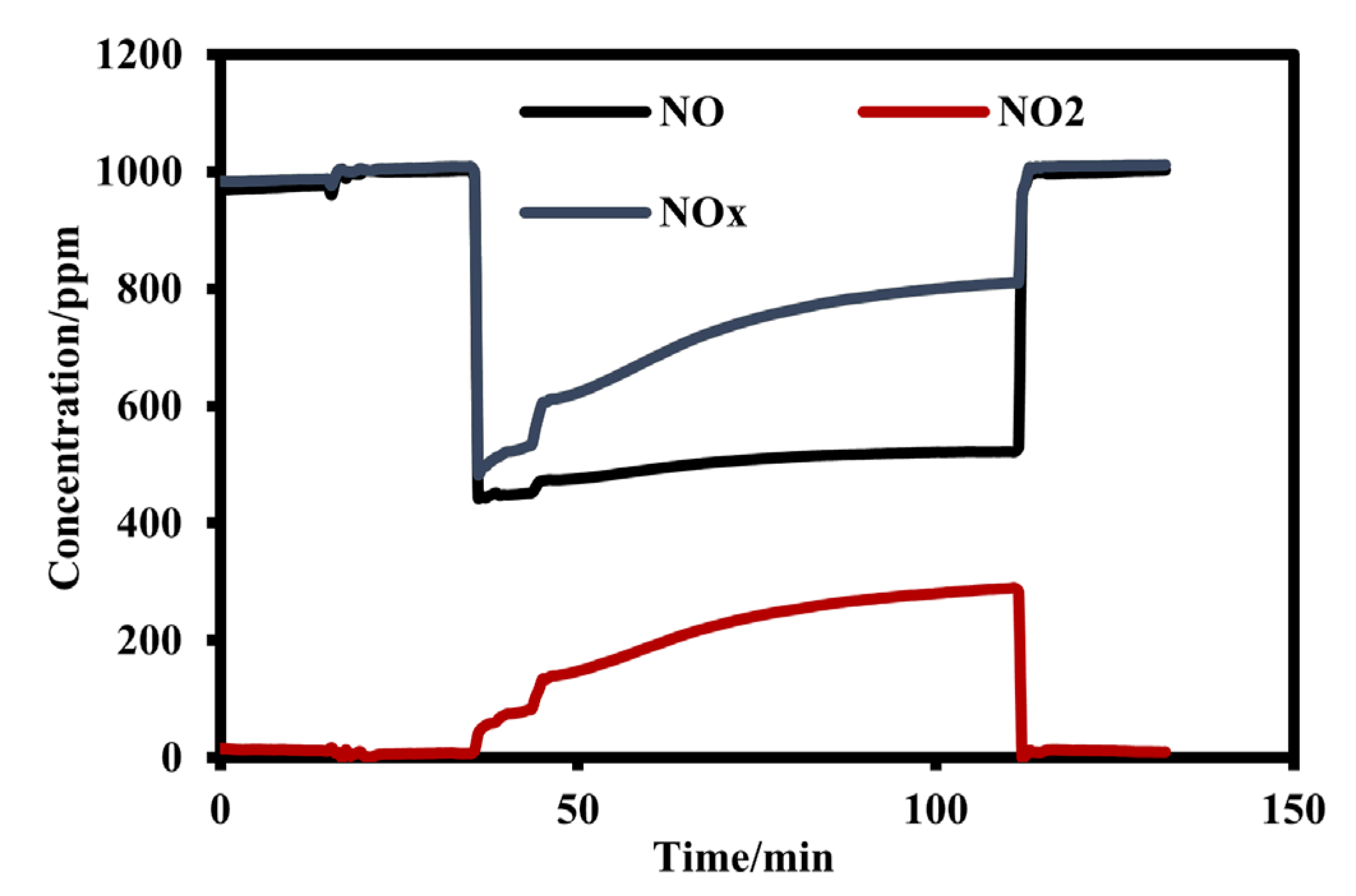

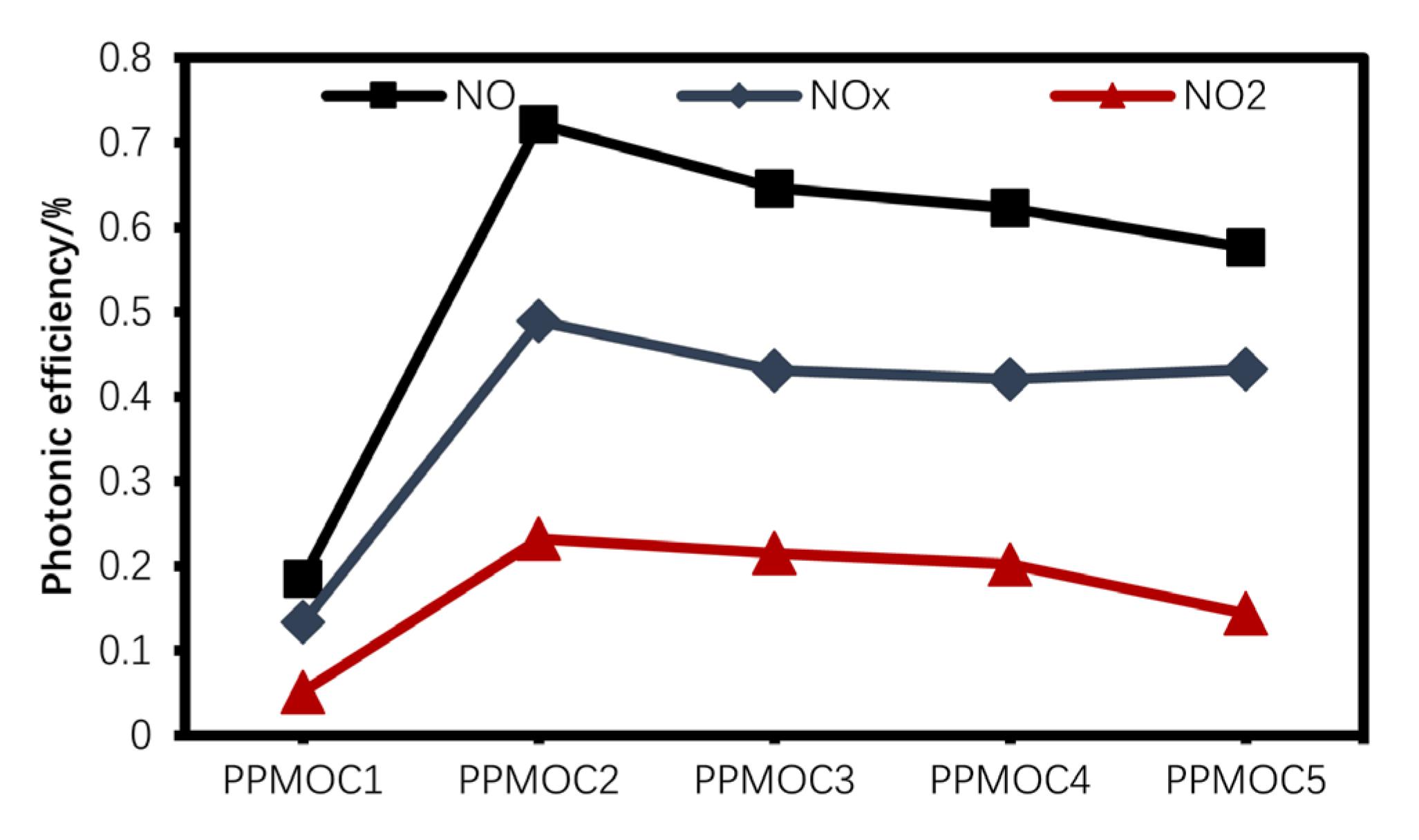

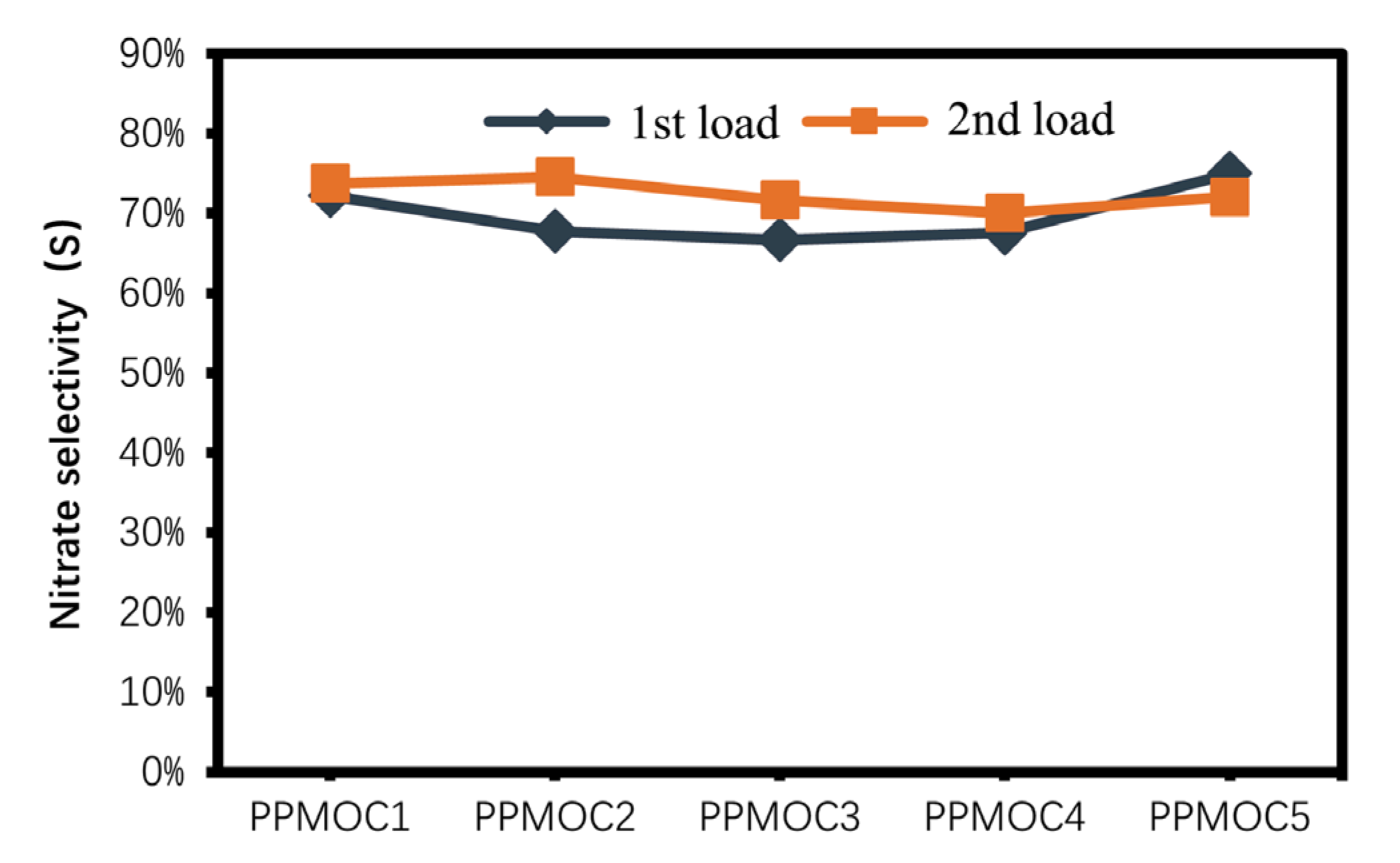
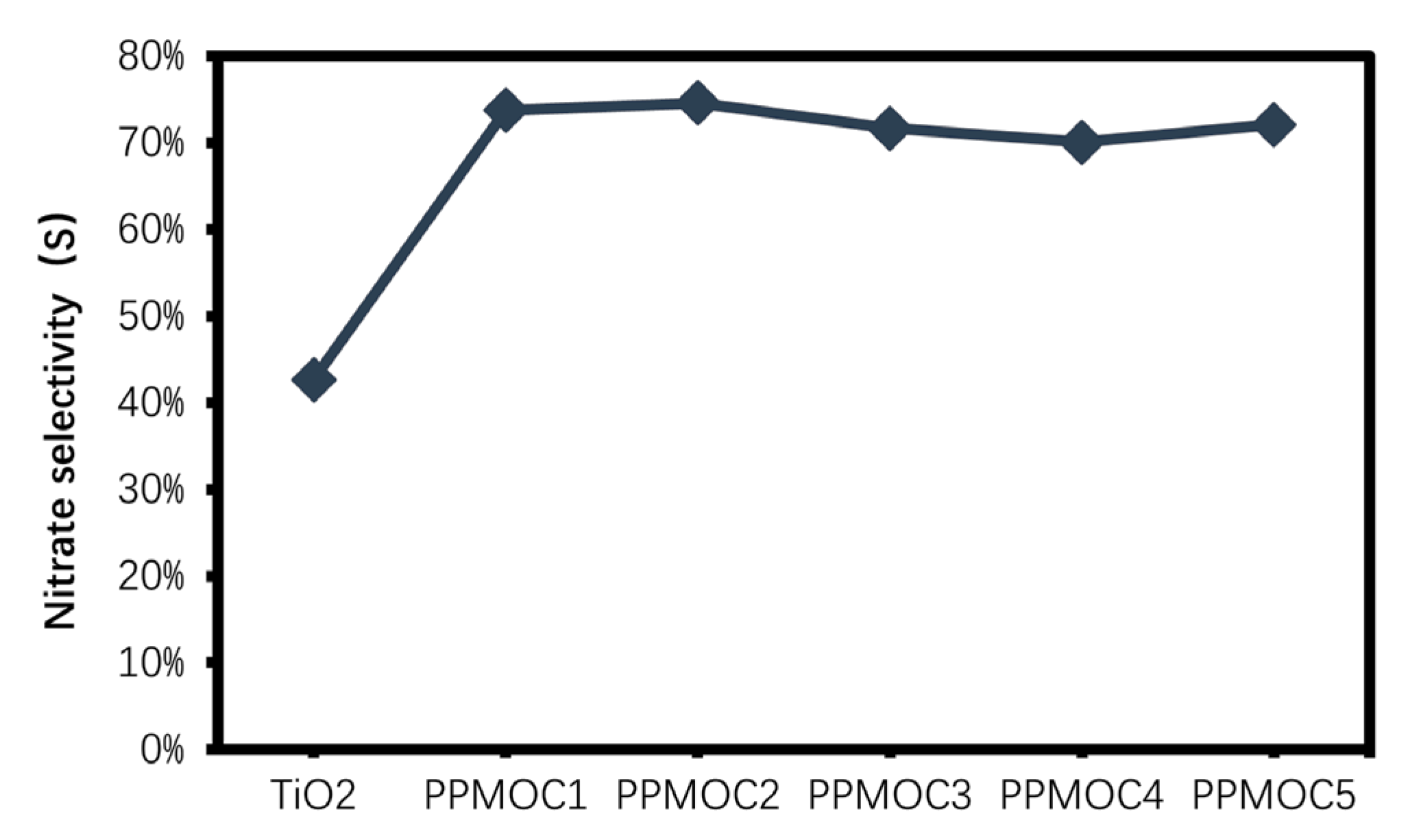

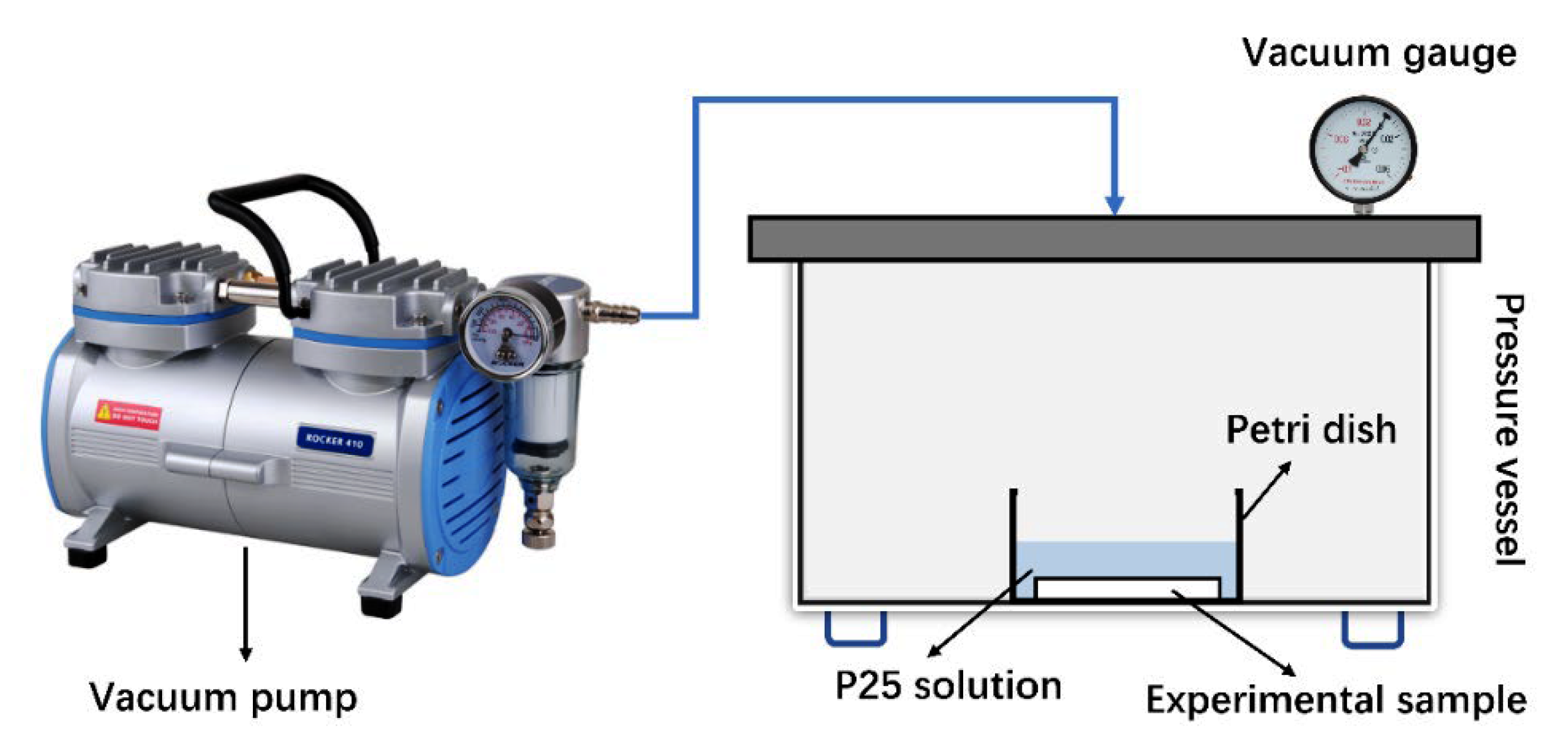
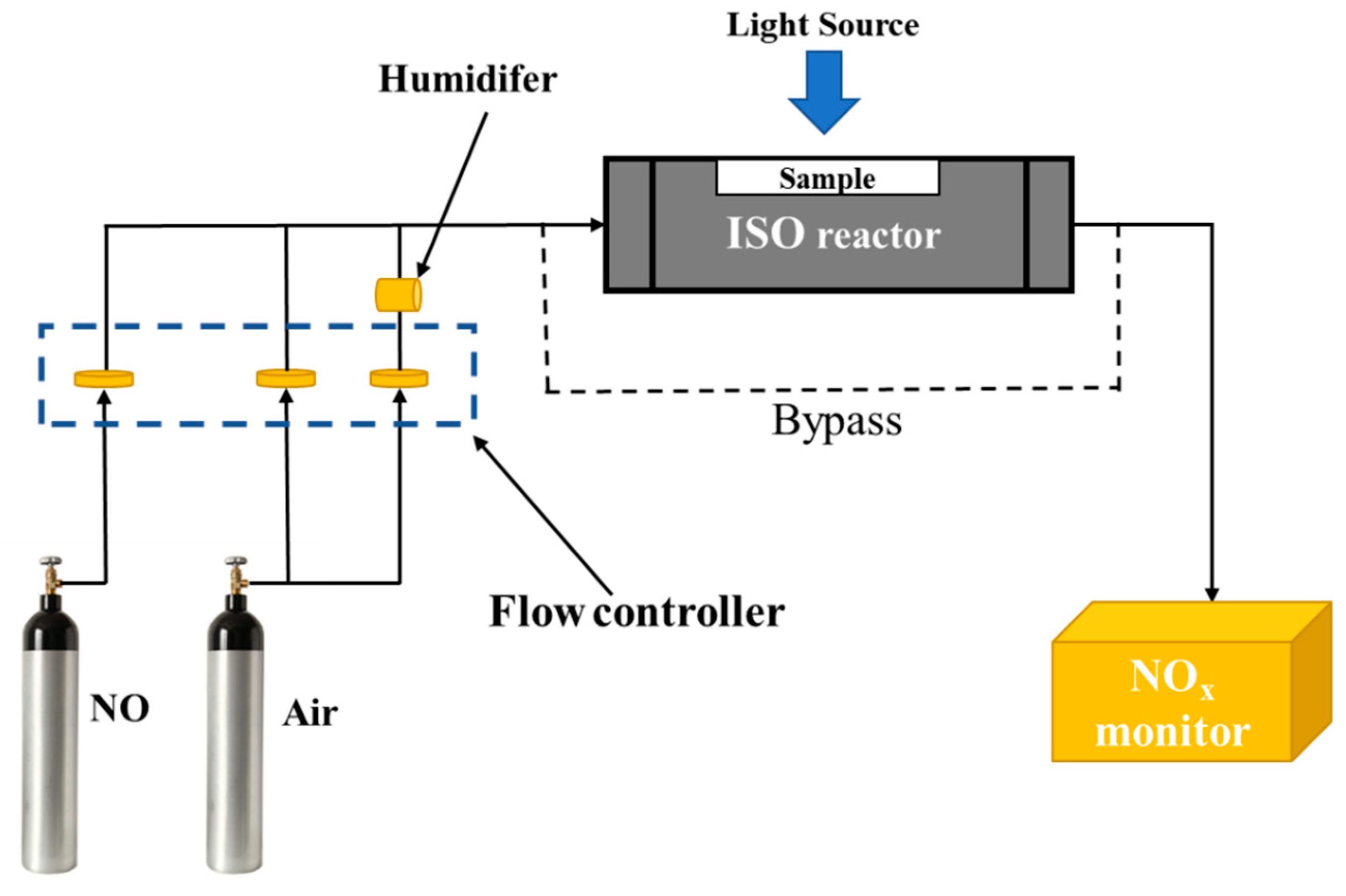
| Name | Amount of Foaming Agent Added mL | Weight g | Length cm | Width cm | Height cm | Density g·cm−3 | Porosity |
|---|---|---|---|---|---|---|---|
| PMOC1 | 0 | 45.20 | 10 | 5 | 0.53 | 1.702 | 5.4% |
| PMOC2 | 50 | 21.47 | 10 | 5 | 0.52 | 0.826 | 54.1% |
| PMOC3 | 100 | 22.07 | 10 | 5 | 0.615 | 0.718 | 60.1% |
| PMOC4 | 150 | 23.56 | 10 | 5 | 0.68 | 0.693 | 61.5% |
| PMOC5 | 200 | 18.04 | 10 | 5 | 0.59 | 0.612 | 66.0% |
Disclaimer/Publisher’s Note: The statements, opinions and data contained in all publications are solely those of the individual author(s) and contributor(s) and not of MDPI and/or the editor(s). MDPI and/or the editor(s) disclaim responsibility for any injury to people or property resulting from any ideas, methods, instructions or products referred to in the content. |
© 2023 by the authors. Licensee MDPI, Basel, Switzerland. This article is an open access article distributed under the terms and conditions of the Creative Commons Attribution (CC BY) license (https://creativecommons.org/licenses/by/4.0/).
Share and Cite
Zhu, L.; Yuan, L.; Xu, X.; Chen, J.; Yang, L. The Preparation of Photocatalytic Porous Magnesium Oxychloride Cement-Based Materials and Its De-NOx Performance. Catalysts 2023, 13, 326. https://doi.org/10.3390/catal13020326
Zhu L, Yuan L, Xu X, Chen J, Yang L. The Preparation of Photocatalytic Porous Magnesium Oxychloride Cement-Based Materials and Its De-NOx Performance. Catalysts. 2023; 13(2):326. https://doi.org/10.3390/catal13020326
Chicago/Turabian StyleZhu, Lide, Liran Yuan, Xingang Xu, Jing Chen, and Lu Yang. 2023. "The Preparation of Photocatalytic Porous Magnesium Oxychloride Cement-Based Materials and Its De-NOx Performance" Catalysts 13, no. 2: 326. https://doi.org/10.3390/catal13020326
APA StyleZhu, L., Yuan, L., Xu, X., Chen, J., & Yang, L. (2023). The Preparation of Photocatalytic Porous Magnesium Oxychloride Cement-Based Materials and Its De-NOx Performance. Catalysts, 13(2), 326. https://doi.org/10.3390/catal13020326






